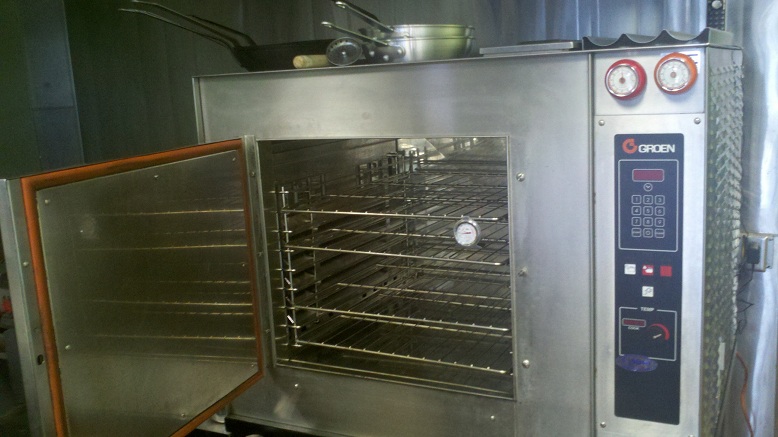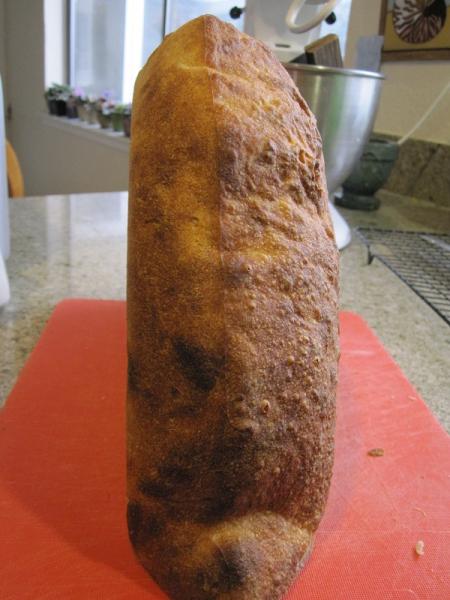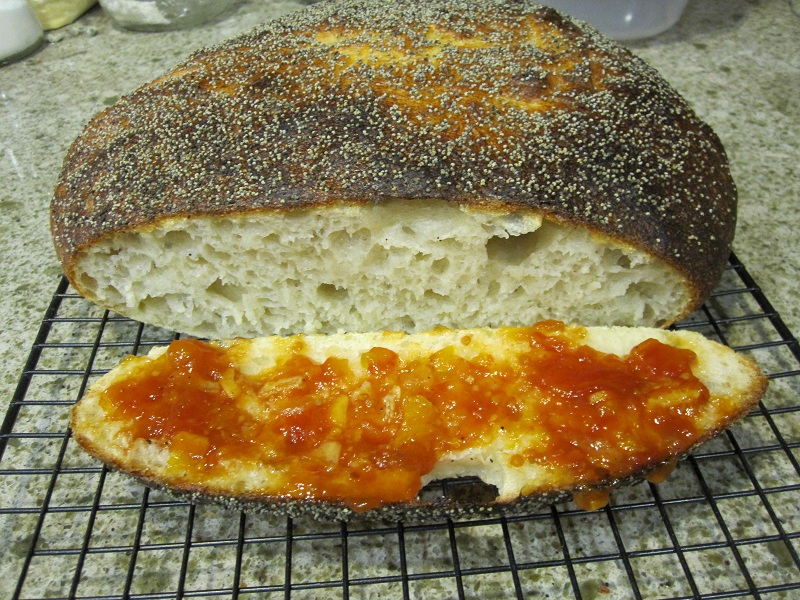In recent weeks I've been kibitzing a friend who's starting up a new restaurant where he's been trying out a recently purchased, second hand, commercial "combo oven". The oven is proving a bit cranky and he's working out the bugs and tinkering with bake times and temperatures. I got a chance to bake a couple test loaves in the oven and was very impressed with the "jump rise" achieved in "combo" mode (heat with superheated steam in the oven).

^My friend's big "combo oven" (not something for the home kitchen!)

^test loaf from the big "combo oven"
You can clearly see how the loaf lifted itself the sheet pan when cooked in the combo oven with a lot of steam.
Impressed, I tried "cooking with steam" in my home oven by dumping a cup of hot water in a pan near the bottom of the oven and slamming the door. I'd previously thought (erroneously) that this would keep the oven near the boiling point of water, but that's wrong. The oven runs near the set temperature (usually ~450F) and there's simply a lot of humidity in the oven, near saturation.
Here's a loaf I baked with steam at home:

^loaf baked with steam (with my beloved wife's home-made tomato jam on a slice)
Notice that the above loaf is round on the bottom as well as on the top from lifting itself off the baking sheet!
In my home oven experiments I notice when I cook with steam this way I'm getting much more browning on the top of the loaf than the bottom. I'm delighted with the jump rise I get with steam, and I think I should be able to get the top and bottom more similar with some more tinkering.
Now, on to shopping for and using brotforms/bannetons.
A shopping report first. My friend with the new restaurant mentioned needing some inexpensive baskets for forming/proofing loaves. I did some shopping and found a big selection of inexpensive baskets at luckyclovertrading.com including three kinds of "brotform" basket and also some willow "banneton"-style baskets. They don't sell cloth liners for the brotforms. That's OK because my friend with the restaurant usually lines his proofing baskets with cloth restaurant napkin which I found cheap at another site.
I ordered some brotform baskets and some napkins from the above sources. My friend with the restaurant really likes the brotform baskets and I do too. The napkins just came a few minutes ago; I like them because they have a very tight, shiny weave that should be hard for dough to stick to. My friend has used similar napkins with good success.
I've had a little trouble occasionally in the past with dough sometimes sticking to custom made brotform liners. The ones I have fit very nicely but have a softer, slightly less tightly woven fabric than my new napkins. Recently it occurred to me part of the reason dough stuck to the liner sometimes I've had problems scoring loaves was I'm not used to letting a loaf "rest" on the counter until the surface dries out a bit and a skin forms. I tried doing exactly that, let the dough rest uncovered until the surface didn't feel sticky, dusted it with a little rice flour, and plopped it inverted into a lined brotform. It worked great! The dough showed zero inclination to stick coming out of the brotform, and scoring was a breeze as the "skin" on the loaf parted under the razor blade!